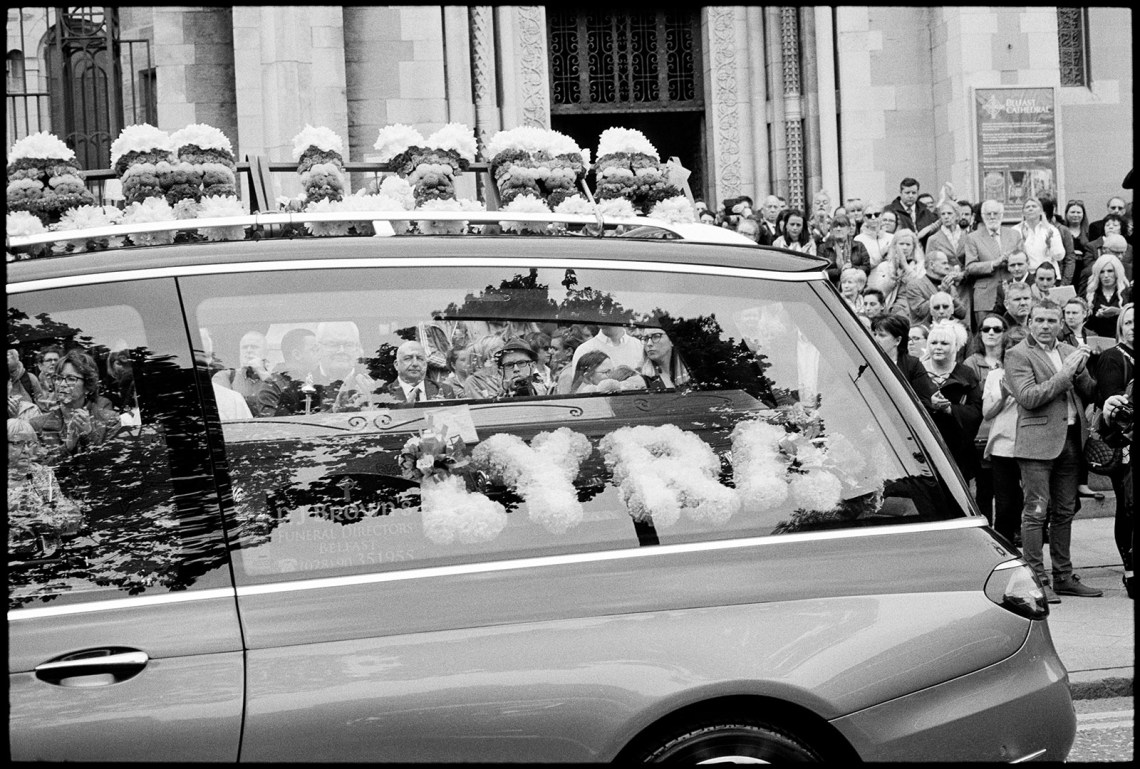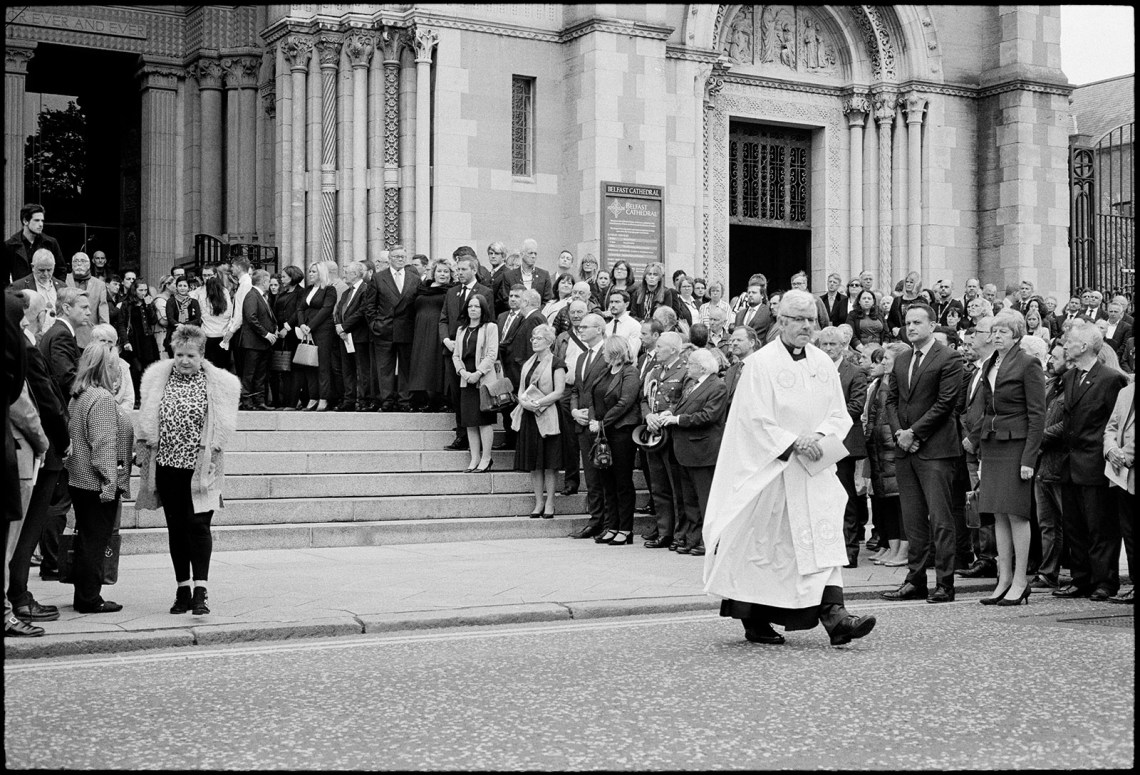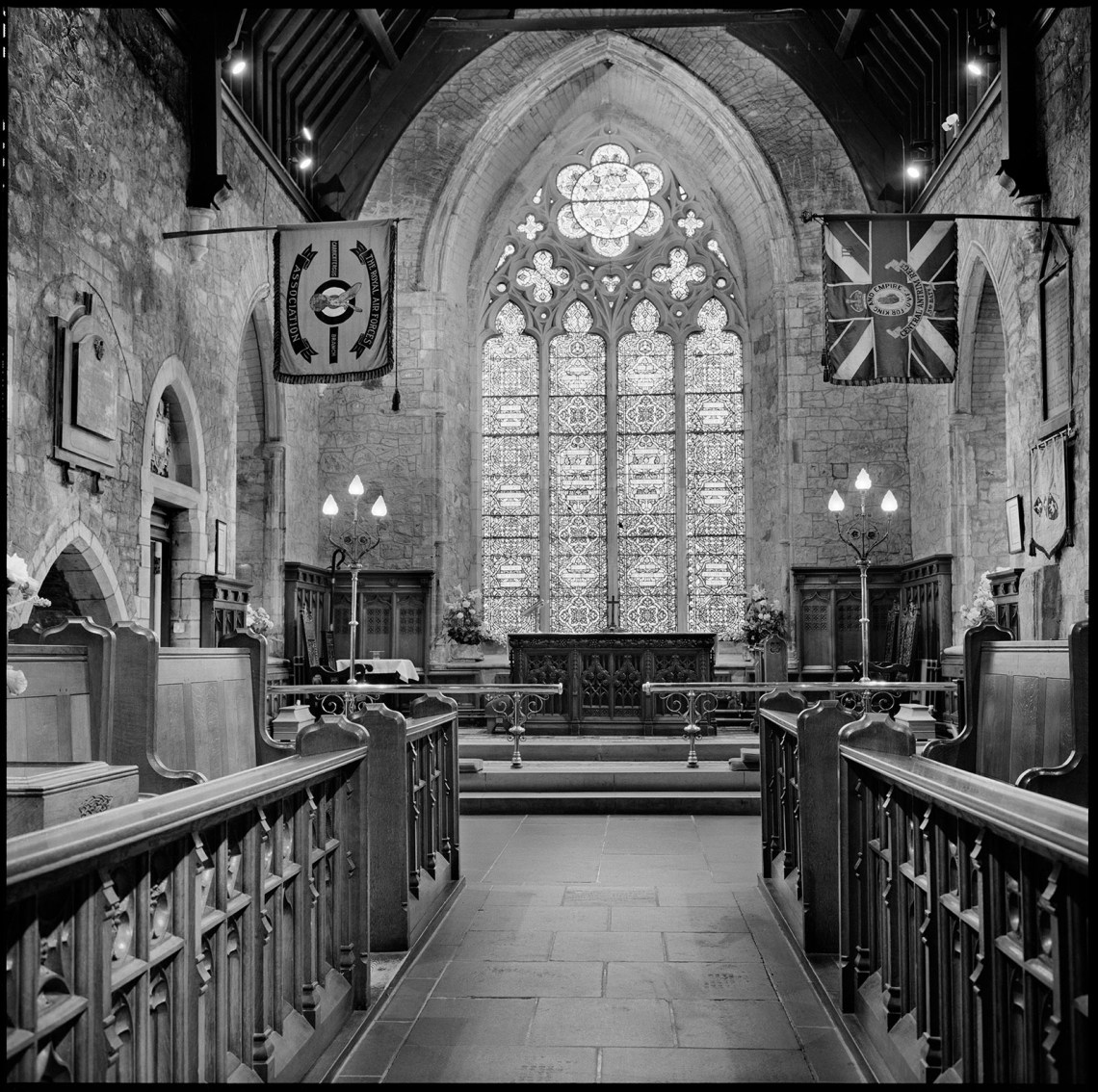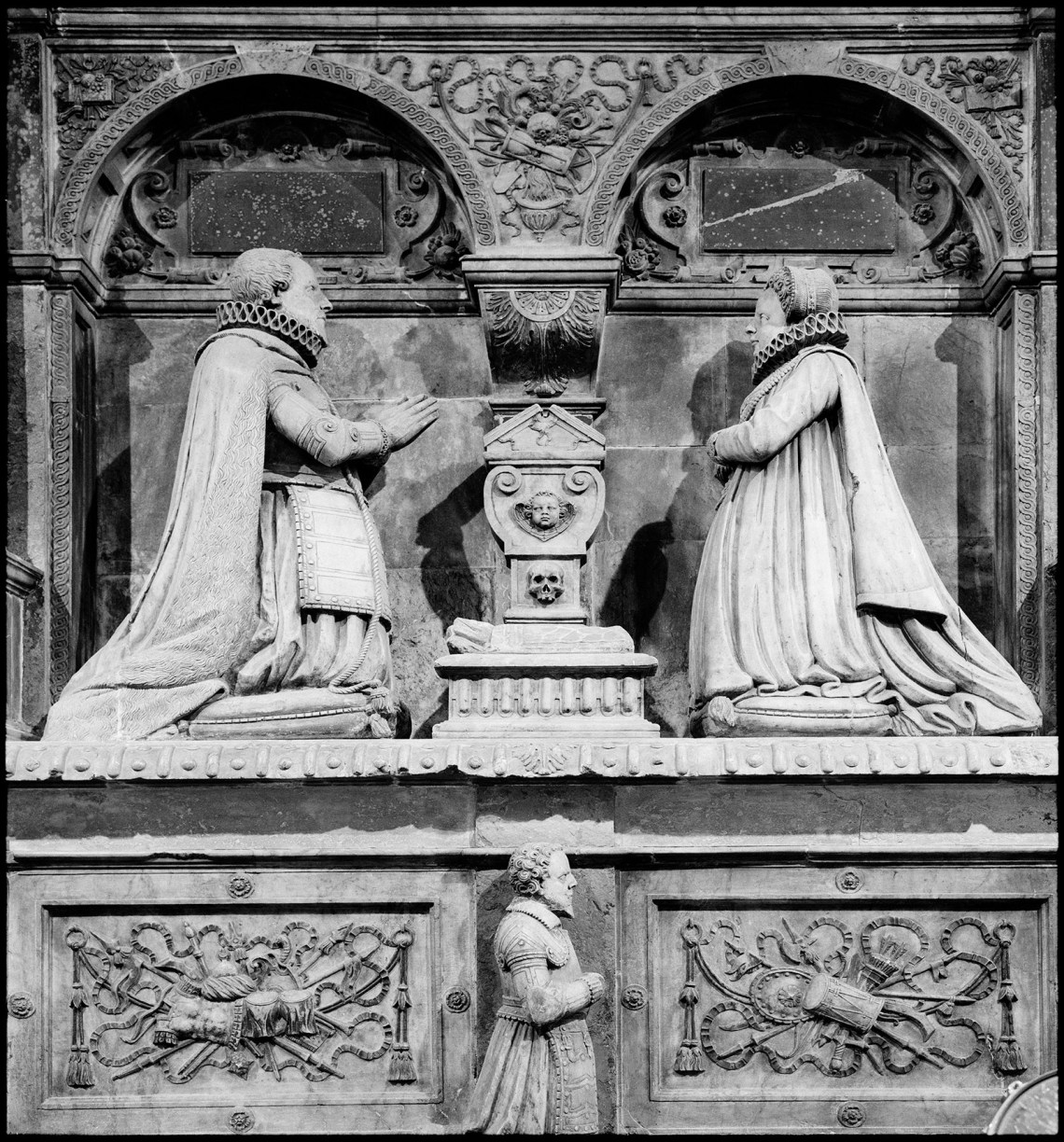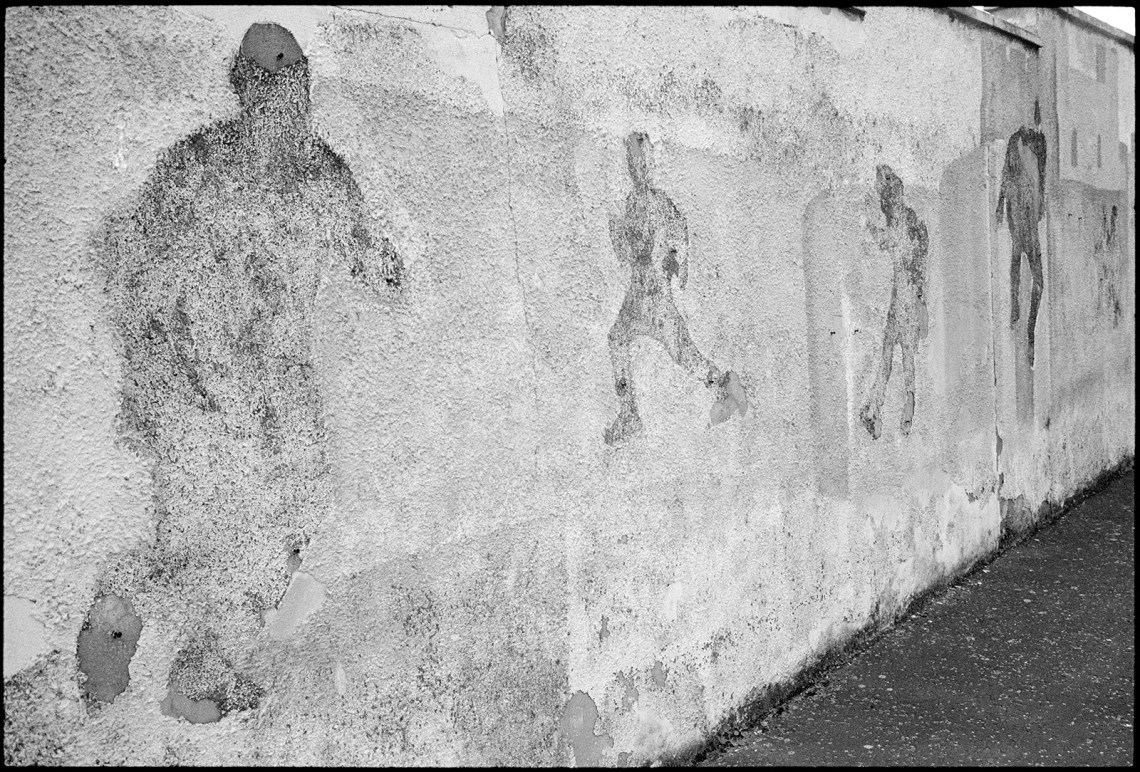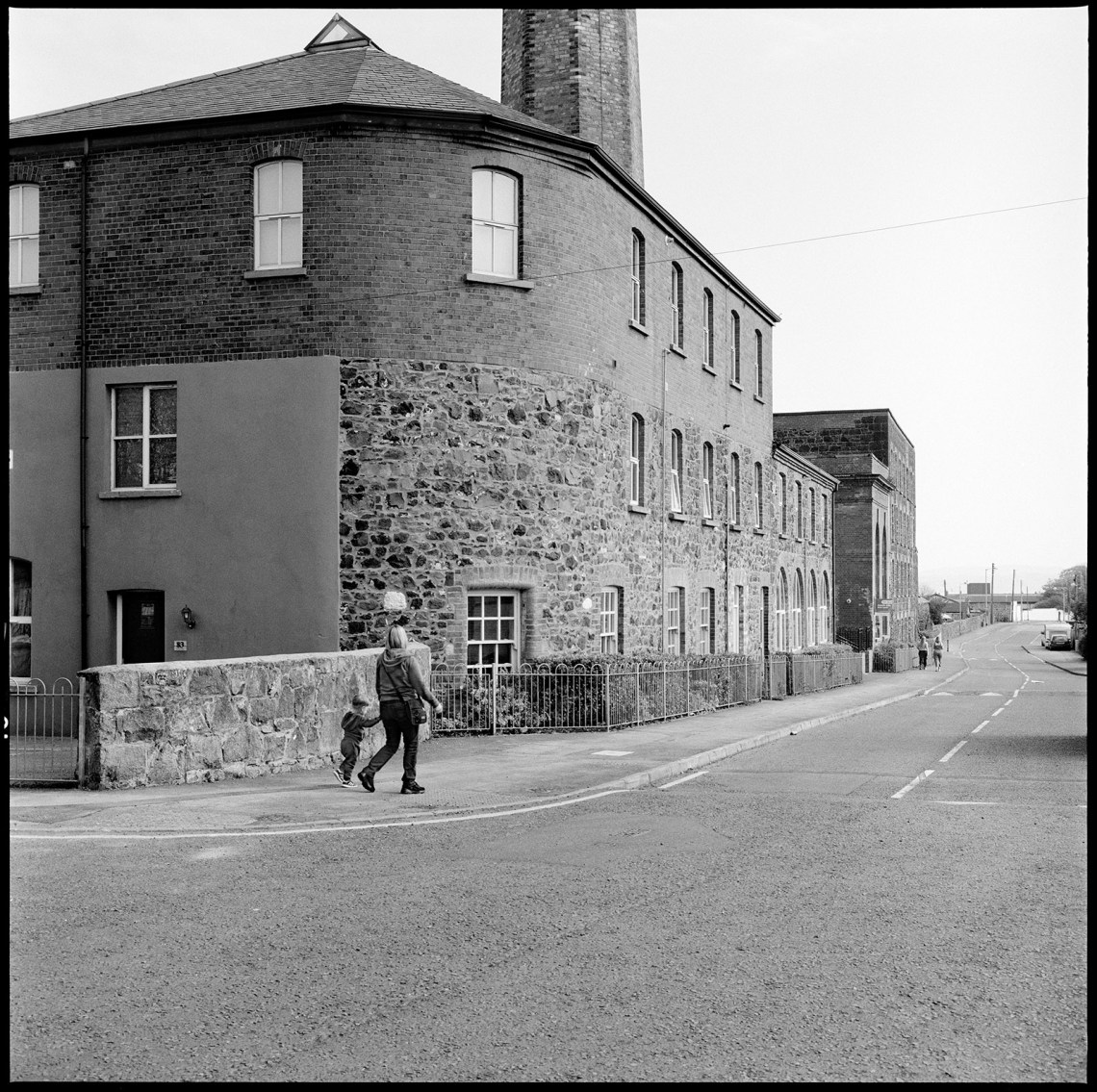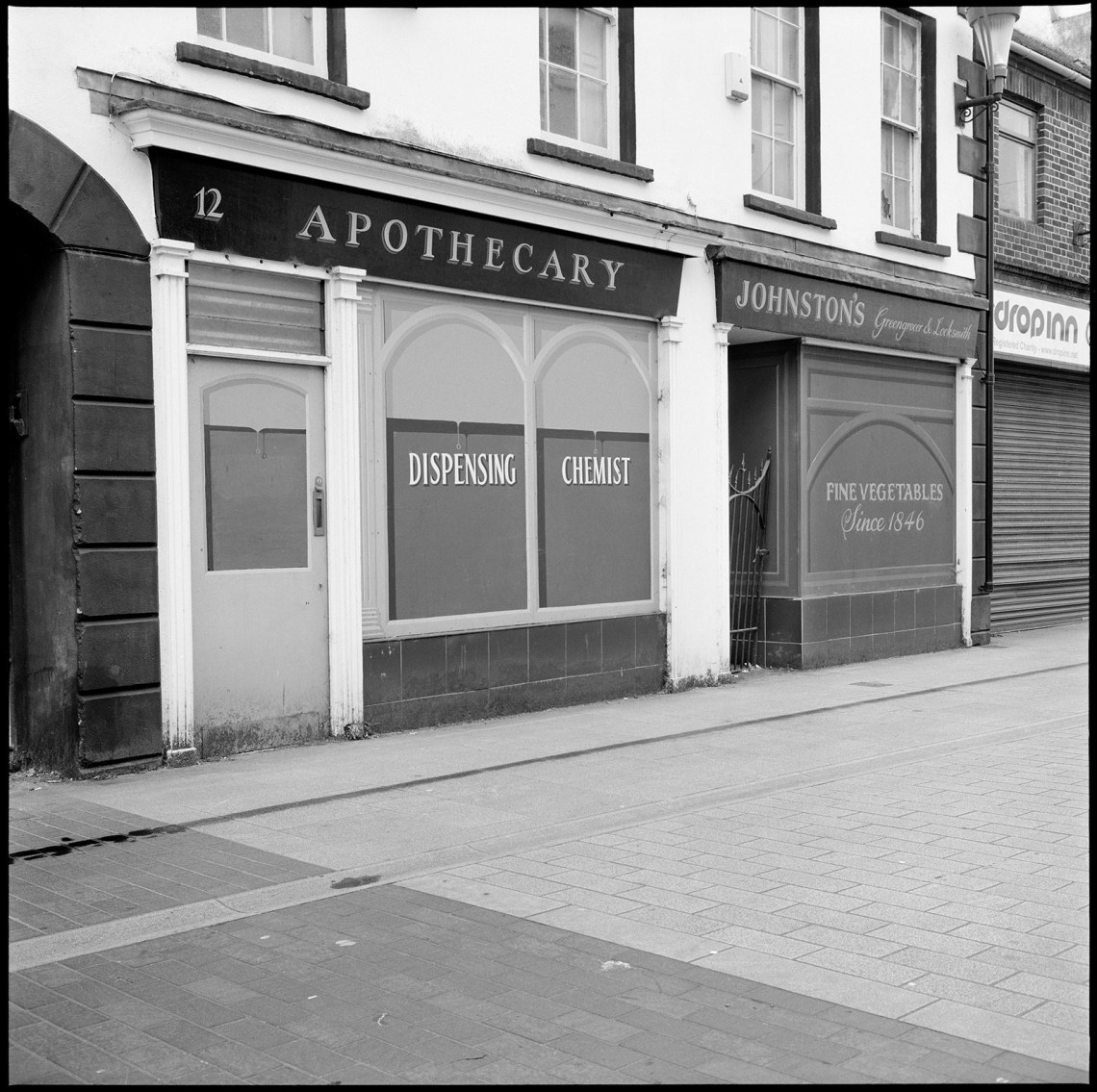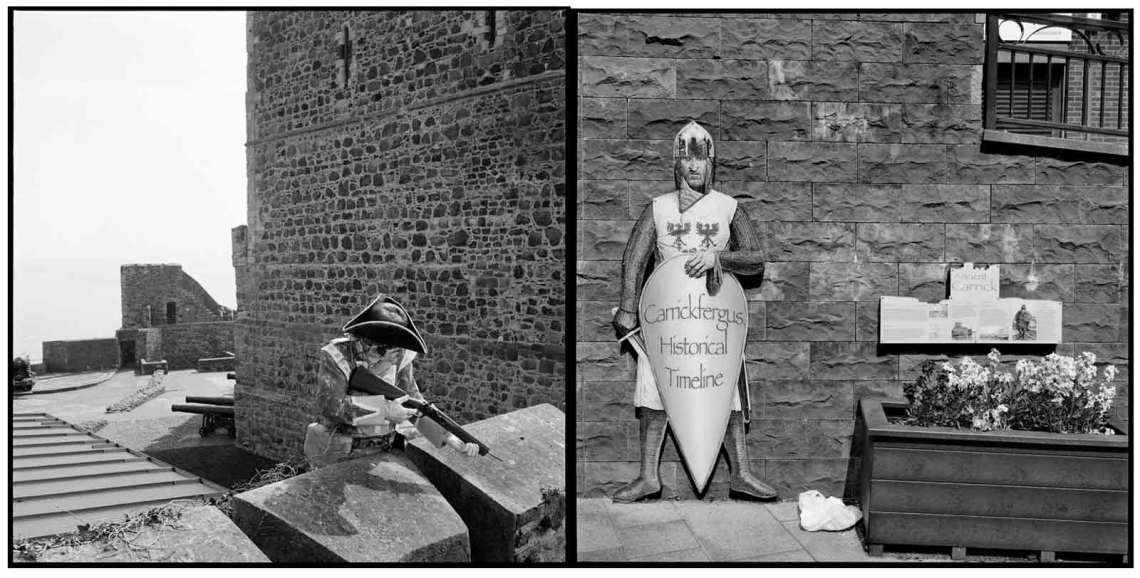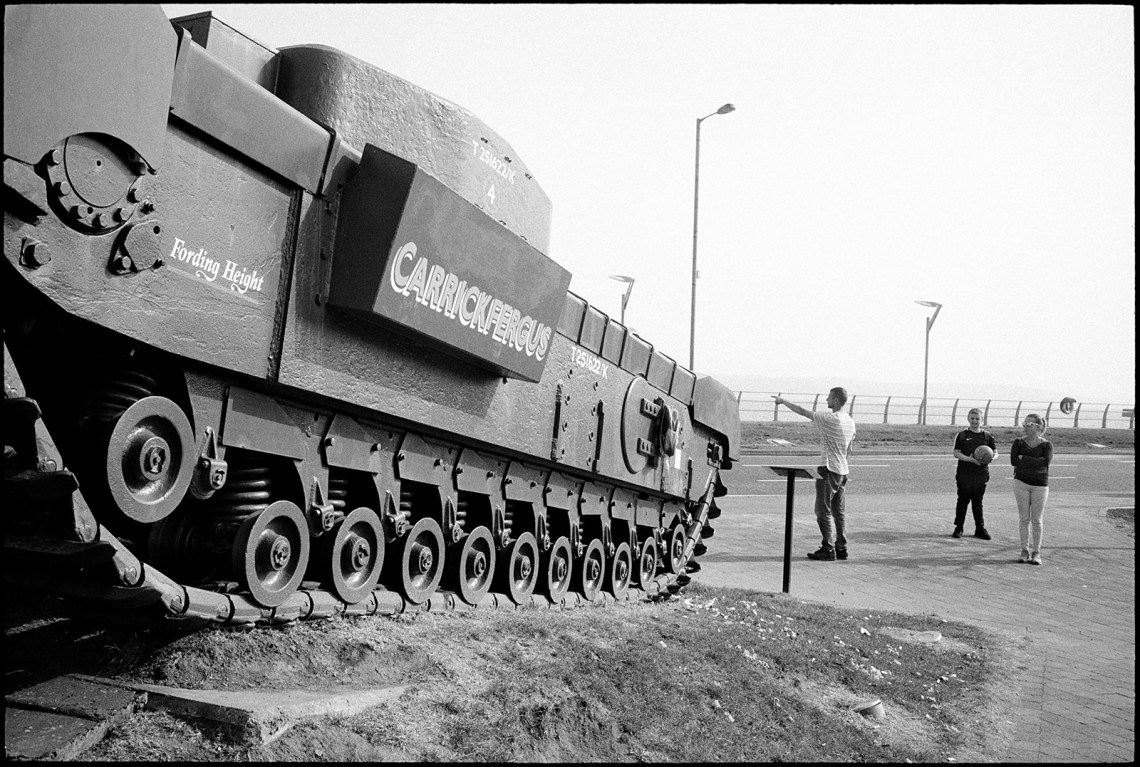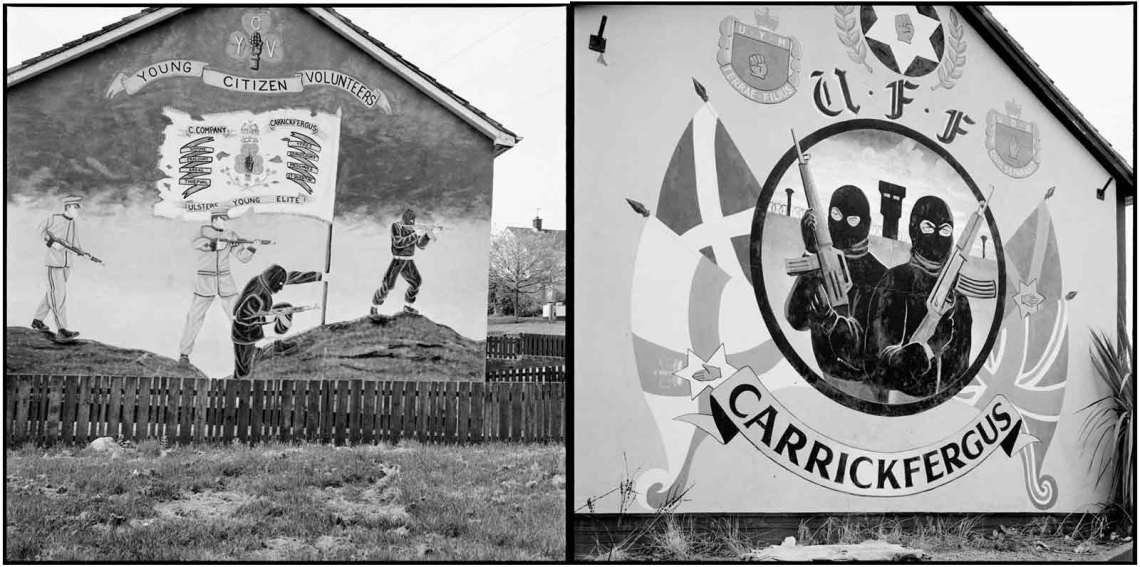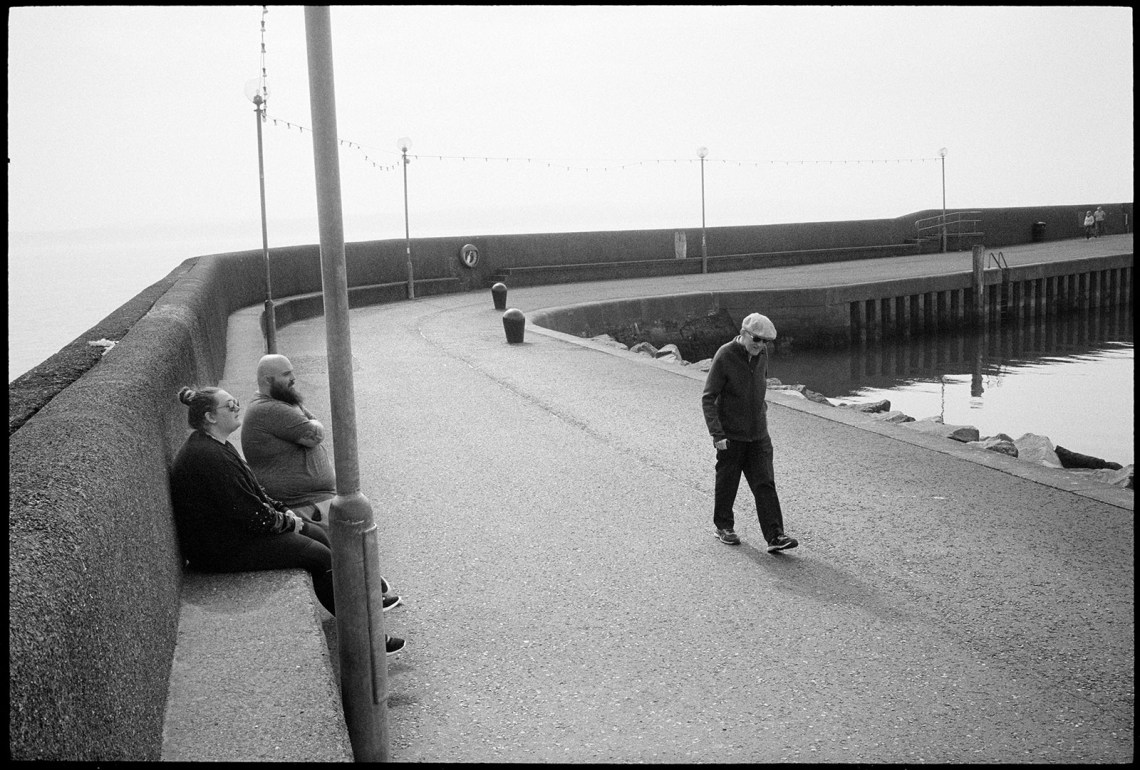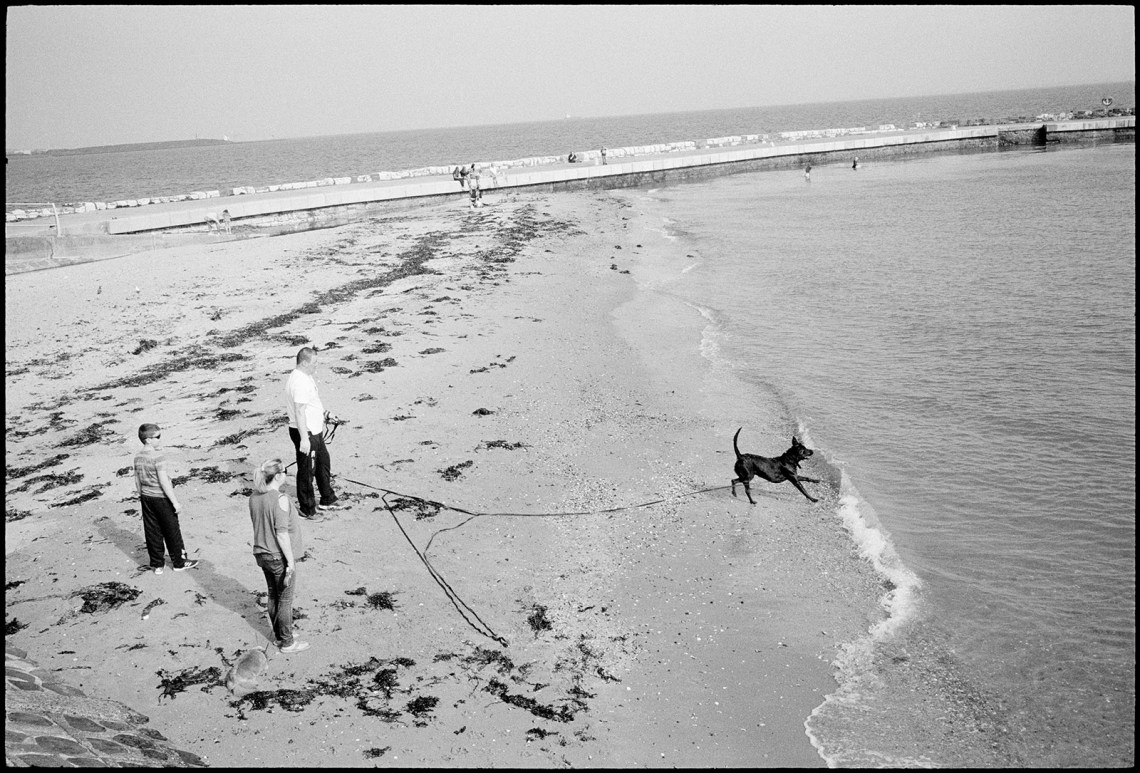The little boats beneath the Norman castle,
The pier shining with lumps of crystal salt;
The Scotch Quarter with a line of residential houses
But the Irish Quarter was a slum for the blind and the halt.
—From “Carrickfergus” (1937), by Louis MacNeice
The curse of Oliver Cromwell, four hundred years of tit-for-tat sectarian violence, the blessings of the peacemakers, and an Irish priest’s vision of a “doorway to a new beginning,” were all poised, alongside the shibboleths and twisted lives, in the troubled funereal air of the Protestant cathedral of St. Anne’s, Belfast, on April 24. Lyra McKee, a well-liked twenty-nine-year-old journalist, had been shot and killed by a New IRA gunman while reporting on unrest in the city of Derry the previous week.
Moving eulogies, uttered with tenderness and hope, were broadcast to the congregation: “I plead with you to take the road of nonviolence to achieve your political ends.” That was from Father Martin Magill, a Catholic parish priest of West Belfast and a friend of the slain journalist, during the ecumenical service. “Why in God’s name does it take the death of a twenty-nine-year-old woman with her whole life in front of her… to get to this point,” he asked—and received a standing ovation.
A woman beside me buried her face in a crumpled white handkerchief, the order of service squeezed under her left arm. The crowd gathered outside in Writer’s Square, under tall, shimmering birch trees, also applauded. Inside, occupying the front rows, senior representatives from Northern Ireland’s dysfunctional government at Stormont, accompanied by Irish and British political leaders, rose hesitantly to their feet.
On October 26, 1935, the Unionist leader Lord Edward Carson was laid to rest at this same cathedral. The officiating Anglican bishop at that service, John Frederick MacNeice—father of the poet Louis MacNeice—stirred controversy when he objected to the Stormont authorities’ proposal that Britain’s Union flag should hang over Carson’s tomb. The national emblem, MacNeice determined, “should not be brought into political associations.”
Carson, described by Louis MacNeice as his father’s “lifelong bête noire,” was a principal architect of Irish partition, enacted in 1921, and the first signatory to the Covenant, a Protestant compact that was also a Unionist call to arms. Carson’s legacy was to leave Northern Ireland at risk of becoming, in the words of an East Belfast member of the British Parliament at the time, “the moth-eaten tail of the British lion.”
Bishop John MacNeice, much like Father Magill today, was a hard-working peacemaker of considerable integrity. He preached that “geography has little to do with the interpretation of the Sermon on the Mount.” The Beatitudes, which exalt peacemakers and the merciful, have nothing to say about Holy War. Between World War I and World War II, MacNeice père, who then held the more lowly position of rector at St. Nicholas’s Church in Carrickfergus, sought to promote amity through interfaith cooperation. In 1933, he made an outspoken attack on the Nazi treatment of Jews. His son Louis later described his father as “a great man,” and he remained deeply inspired by his father’s steadfast loyalty to many of the causes he subscribed to. The Covenant, which MacNeice senior refused to sign, was not one of them.
It was Carrickfergus—the names, variously, of an old Irish folksong, the MacNeice poem, the eight-hundred-year-old town named after a basalt outcrop (Carrick) and a leprotic king (Fergus) in search of a cure—that lured me to the east coast of Northern Ireland. I doubt there is an Irish singer of note who hasn’t recorded a version of the song. Twenty years ago, it was played in St. Patrick’s Old Cathedral, New York, at the memorial service for John F. Kennedy Jr., his wife, Carolyn Bessette Kennedy, and her sister, Lauren G. Bessette, who died together when the light aircraft he was piloting went down. In the recording I have, Van Morrison sings: “I wish I had you in Carrickfergus, / Only for nights in Ballygrand, / I would swim over the deepest ocean.”
What, I wondered, given the town’s conflict-scarred past, makes Carrickfergus so captivating? “It’s a friendly place,” said Ann Moorhead, a former army driver and bus driver whom I met in Carrickfergus. She came back to live here after many years spent in the Southeast of England. Some of that appeal is certainly felt in “Carrickfergus,” by Louis MacNeice. The poem itself is alluring for the rich tapestry of history and experience that it unfurls. But the history itself has a darker hue.
Advertisement
Let’s begin in the early seventeenth century when an ambitious Briton from Devon, Sir Arthur Chichester, set out to avenge his brother’s death fighting in the wars in Ireland. John Chichester’s decapitated head was, the story has it, used as a football by the victorious MacDonnell clan. At the king’s behest, Chichester laid waste to every Gaelic territory within twenty miles of Carrickfergus. “I burned all along the Lough,” he wrote, “and killed one hundred people, sparing none what quality [sic], age, or sex soever, besydes many burned to death; we kill man, woman, and child, horse, beast, whatsoever we find.”
Chichester went on to execute two Catholic bishops, and spent several years social engineering and town-walling to exclude Catholics and Scots who did not belong to the established church, the Protestant Church of Ireland. He later named his own expansive new home in Carrickfergus “Joymount.” A few decades later and farther south, the British “Protector,” the autocratic Oliver Cromwell, who also saw Catholics as a threat, conducted a punitive raid on Drogheda, mercilessly putting to the sword some 2,000 rebels and townspeople in a single night. In his novel Ulysses, James Joyce made acerbic reference to the Drogheda Massacre and the man whom the historian Micheál Ó Siochrú refers to as “God’s executioner.”
This brutal history was no doubt present, too, for Louis MacNeice. Born in Belfast in 1907, the youngest of three siblings, he grew up mainly in Carrickfergus, after the family moved there the following year when John MacNeice took up his position at St. Nicholas’s. The MacNeices did not find themselves welcome: the parishioners had wanted for their rector the existing curate, not a newcomer from the west. I found an echo in the family’s struggle for acceptance in the difficulties of settling in Yorkshire experienced by the Brontës, whose paterfamilias, Patrick, was himself a clergyman from Ireland. Soon after they settled in Haworth, in April 1820, death plagued the Brontës. The MacNeices, too, had their misfortunes, though to a lesser degree. Four years after arriving in Carrickfergus, Louis’s mother, Elizabeth (Lily), suffered severe depression following a hysterectomy. She died two years later, in December 1914, in a Dublin mental hospital.
In a handwritten memoir held in the archives of Carrickfergus Museum, Louis’s sister Elizabeth writes of the painful summer of 1913:
Louis, in particular, as the youngest, was very attached to his mother and before her illness, I remember them being a very great deal together… he was only five and a half and must have found the experience very bewildering and disturbing… she became more and more restless and unhappy and his last memory picture of her walking up the garden path in tears, seems to have haunted Louis for the rest of his life.
Indeed, MacNeice’s childhood anguish is set out in his 1940 poem “Autobiography”: “When I was five the black dreams came; / Nothing after was quite the same.” He was only seven when he began writing poetry—the age he was when his mother died, or, as his sister recalled, as soon as he could write.
It was in 1937 that he composed “Carrickfergus.” He listened to the “Fog-horn, mill-horn, corncrake and church bell / Half heard through boarded time as a child in bed,” all recounted in a later poem, “Carrick Revisited.” After the outbreak of World War I, and during the Easter Rising of 1916, soldiers were ever-present: exercising, parading to bugle calls, and drumming up recruits. But not in St. Nicholas’s Church, where his father held sway and preached against the suppression of the mounting war casualty figures. Some 40,000 Irish soldiers died serving in World War I, some 3,500 in July 1916 alone during the Battle of the Somme—among them, more than 2,000 men from the Ulster Division killed on the first day of action.
His father’s strongly proclaimed moral commitments can hardly have made things comfortable for the young Louis. From where he habitually sat, facing the pulpit on the left side of the church’s skewed central aisle, he had a clear view down the transept of the Chichester Monument. Some of what he felt, perhaps, is recorded in the fifth stanza of “Carrickfergus”:
I was the rector’s son, born to the Anglican order,
Banned forever from the candles of the Irish poor;
The Chichesters knelt in marble at the head of a transept
With ruffs about their necks, their portion sure.
At the time of Louis’s childhood, the town was going through something of a boom, thanks to the shipbuilding industry, nearby salt mines, and textile mills. The American Civil War’s disruption of the cotton trade in the United States had opened up economic opportunities in Northern Ireland. The main mill, linen merchant James Taylor’s, which was constantly expanding at this time, employed over 600 workers, mostly women. On their way to work, the millworkers took a footpath that ran alongside the railway. With their black shawls pulled over their heads, and their Northern Irish working-class accents, the women sounded, to the young Louis’s ear, “harsh and embittered and jeering.” Spoken in their voices, the abbreviated local name for the town, Carrick, was itself to MacNeice “like a slap in the face”—in sharp contrast to the soft brogue of southern Ireland.
Advertisement
Both from his childhood home in Carrickfergus and at the boarding school he attended in Dorset, England, Louis acquired an abiding fascination with nature. He kept cats—“Incorrigible, uncommitted / They leavened the long flat hours of my childhood,” he recalled—collected fossils and caterpillars, counted the animals he saw (both in the wild and at the zoo), and noted it all down, so much of which was to change radically with the new farming methods of the postwar period. Today, climate change has accelerated the decline of many of the wildlife species he would have known—a type of caterpillar that Louis collected at school, Arctia caja, the garden tiger moth or “woolly bear,” no longer exists.
Like many of the poorer regions of Northern Ireland, Carrickfergus today is in social and economic decline. Behind the white smoke and pageantry of a gun salute marking the Queen’s ninety-third birthday, the bunting and play-history of the redcoat sharpshooters positioned around the town’s ancient Norman castle, lie the darker truths of rapid and recent out-migration. Opportunities are so sparse that since 1998 more than a quarter of the population has moved away, mainly because the big employers already left town decades ago. In the absence of meaningful jobs, mental health referrals and suicides have spiked. “The tragic irony of life in Northern Ireland today,” Lyra McKee wrote for The Atlantic in 2016, “is that peace seems to have claimed more lives than war ever did.” These are issues that have remained unaddressed since the collapse in January 2017 of the power-sharing Executive at Stormont left a political vacuum.
Unionism’s unwavering, if sentimental-seeming loyalty to the royal family and the British state remains largely unrepaid. On a two-day tour of Northern Ireland earlier this year, the Duke and Duchess of Cambridge, William and Kate, who also hold the titles Baron and Baroness of Carrickfergus, visited destinations other than that named in their titles; indeed, they have never been here. Even the Queen’s last visit to Carrickfergus, according to Shirin Murphy, who holds records of such events in the municipal museum, was nearly six decades ago, on August 8, 1961. Moorhead, whose own grandfather fought in the Somme, is frustrated by the unfairness of it all. “There’s enough muck in this country for all of us,” she said, using a slang word for money, “if it were shared out equally.”
On Market Place, one of the town’s principal thoroughfares leading to the historic district of the old Irish Quarter, most of the shops are either boarded up or replaced with trompe–l’oeil façades. The forbidding garrison-town mood is reinforced along the shoreline road, from Troopertown to a US Army Rangers museum. The town’s military-industrial tradition is memorialized in a steel statue of sparring medieval knights and a World War II-era Churchill A22 tank, symbolic of the now-closed testing facility in Carrickfergus, decorates Marine Highway along Belfast Lough. Harland & Wolff, the firm that manufactured the Churchill tanks in Belfast, also built the Titanic. Louis MacNeice watched the doomed liner steam out to sea from Belfast Lough in 1912; he made reference to it in his 1956 poem “Death of an Old Lady.”
Alongside the tank, maroon pennants of the British Parachute Regiment flutter provocatively from lamp-posts on Marine Highway. The Paras, “an elite, aggressive fighting unit,” were the wrong regiment, it has been argued, for the British government to have sent to confront a civil rights demonstration in Derry on January 30, 1972. In 2010, the British prime minister, David Cameron, issued a formal apology for the Paras’ “unjustified and unjustifiable” killing of fourteen civil rights marchers, in a massacre that became known as “Bloody Sunday.” The controversy continues to this day: in March, Britain’s top public prosecutor indicated that there was enough evidence to prosecute “Soldier F” (his real name has been withheld) for the Bloody Sunday murders of two marchers, James Wray and William McKinney. A banner where Marine Highway meets the historic castle proclaims: “Carrickfergus supports Soldier ‘F’. Stop persecuting our veterans.”
Driving up the North Road, I stopped at a down-at-heel housing project known as the Castlemara Estate. There, a bellicose Loyalist mural glorifying the Ulster Freedom Fighters (“Show No Mercy, Expect None”) blends incongruously with an ice-cream van, blaring out its haunting fortissimo version of the children’s song “Teddy Bear’s Picnic.” The writ of the Ulster Covenant still runs in this working-class neighborhood of Carrickfergus, overlooked by another mural depicting a cracked and monocled Edward Carson.
Above the town and the wide estuary stretching far out to Bangor on the other side of Belfast Lough stands the largest war memorial in Northern Ireland: the Knockagh Monument, a tall basalt obelisk honoring those who died fighting in both world wars, bearing the inscription: “Nobly You Fought, Your Knightly Virtue Proved Your Memory Hallowed in the Land You Loved.” Looking down from there, some of the landmarks of MacNeice’s childhood stick out: the castle, the spire of St. Nicholas, and the tall brick chimney of Taylor’s mill. The mill owner’s son and the spinning manager both died fighting in World War I.
During World War II, the mill’s 15,000 spindles were repurposed to produce silk for the parachutes, which Taylor’s workers also stitched together. Today, the yarn-mill has been converted into apartments. The brook that trickles down from a reservoir above the factory, past the red-brick walls and reclaimed parkland, runs clear to a narrow asphalt path where the mill-girls once sauntered along a cinder track to work, watched by the young MacNeice. The third stanza of “Carrickfergus” reads:
The brook ran yellow from the factory stinking of chlorine,
The yarn-milled called its funeral cry at noon;
Our lights looked over the Lough to the lights of Bangor
Under the peacock aura of a drowning moon.
The rectory itself has been demolished, replaced in the late 1980s by a residential care home for seniors. The “prairie-like lawn” has gone, as have most of the tall trees and hawthorn hedges. Barring isolated sightings and an attempted reintroduction on Rathlin Island, the corncrake (Crex crex) that “bridged the surrounding hedge of my childhood… endorsing summer,” as MacNeice wrote, has been extirpated from Northern Ireland.
The narrow shore, where I watched a family playing with a black dog on the beach, will always be “round the corner,” to echo MacNeice’s words in his 1963 collection The Burning Perch. The castle, with its ramparts and the gruesome display of burning oil being poured through a “murder hole” onto unsuspecting visitors, will likely stand for another thousand years. In the municipal museum, a vitrine dedicated to MacNeice displays family photographs. In one, circa 1915, Louis holds up one of his cats. Was it Frisk or Mons? On display also are his christening mug, his silver pencil case, a commemorative bust, two collections of his poetry, Holes in the Sky (1948) and Ten Burnt Offerings (1952), his mother’s tea set, and an ornamental brick from the rectory.
That’s almost the extent of Louis MacNeice’s legacy here. No streets, pubs, or parks are named after the town’s best-known literary figure—in contrast, say, to Bournemouth, the last resting place of Mary Shelley, author of Frankenstein. MacNeice was “a poet’s poet,” as The Times described him in its obituary: “He never sought the easy limelit road to a mass audience.” Louis MacNeice died in London in 1963. He is buried a few miles away in a churchyard at Carrowdore, along with his mother, on a chilly peninsula between Belfast and Strangford loughs. The Northern Irish poet Michael Longley recalled a visit to the grave a year or so after MacNeice’s death, in the company of Derek Mahon and Seamus Heaney. When the poets next gathered, Mahon took from his pocket “In Carrowdore Churchyard.” For Longley, it was “the definitive elegy.” It begins:
Your ashes will not stir, even on this high ground,
However the wind tugs, the headstones shake.
This plot is consecrated, for your sake,
To what lies in the future tense. You lie
Past tension now, and spring is coming round
Igniting flowers on the peninsula.
An admirer of MacNeice’s, and a fellow poet, John Berryman, wrote “Dream Song 267,” also in dedication: “Can Louis die? Why, then it’s time to join him / again, for another round, the lovely man.” The narrow road to Louis MacNeice’s grave is bordered with primroses, Scots pines, and beech trees, their leaves still in bud. High in one, a song thrush sang to the rolling Antrim drumlins, announcing the rain that would soon fall. “In the beginning was the Irish rain,” wrote MacNeice at the start of “Landscape of Childhood and Youth.”
“Let Lyra’s murder be a doorway to a new beginning,” beseeched the Belfast Telegraph’s headline, quoting Father Martin Magill’s funeral oration, which ended: “I detect a deep desire for this.”
In Ireland, the rain can always be counted upon. Peace, desirable as ever, is another matter.


